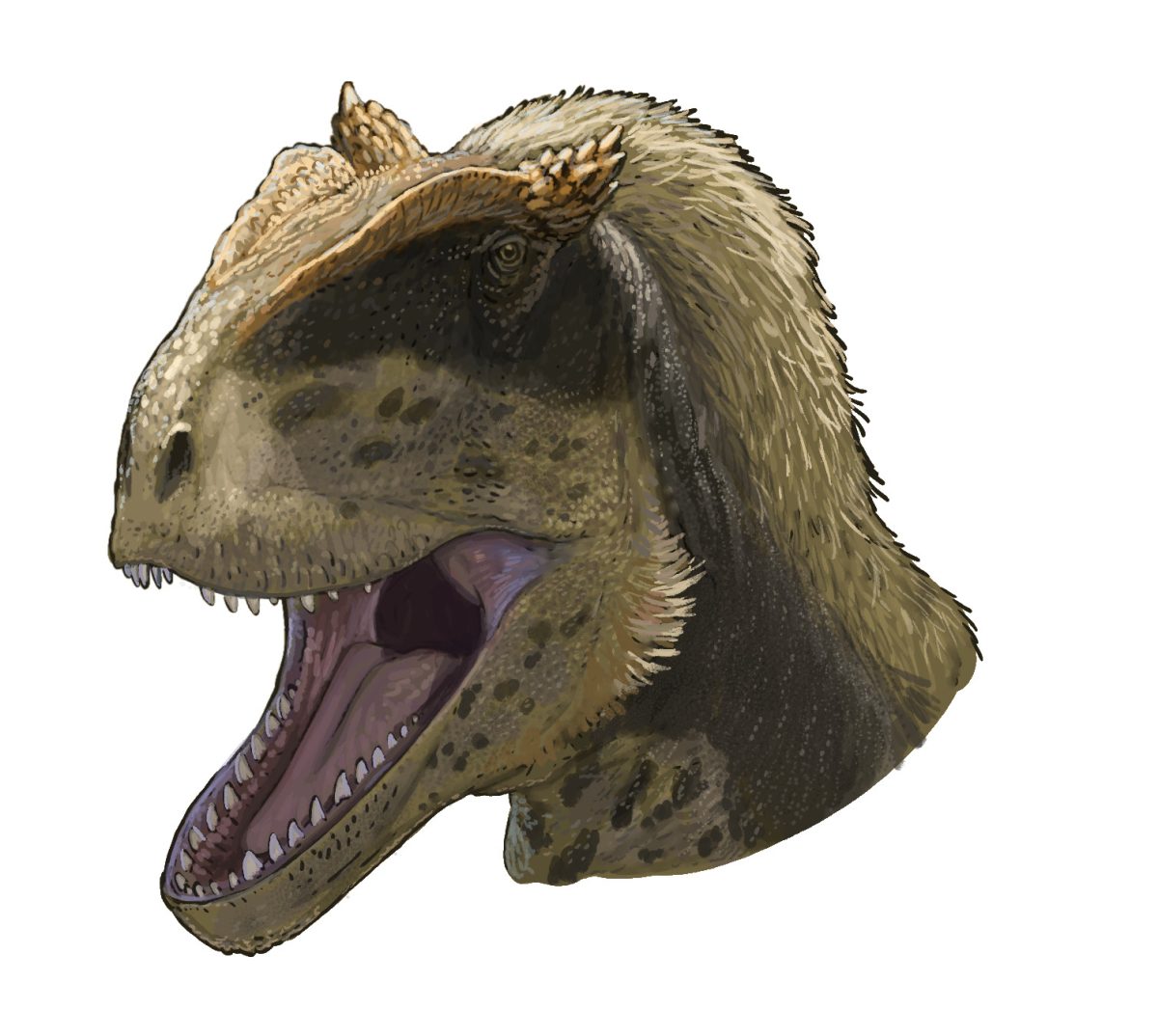Just eight months into 2024, paleontologists from across the world have made an astonishing number of discoveries. While not truly “new,” dinosaurs previously unknown to science can offer a lot of information and also spark many questions. This year in particular, several fascinating discoveries have been made about dinosaurs. From specialized burrowers to a dinosaur with the name of a god, these are 10 of the most significant “new” dinosaurs of this year.
1. Alpkarakush
This dinosaur was a sizeable metriacanthosaurid theropod from the Balabansai Formation in Kyrgyzstan. It is known from a single specimen estimated to be 17 years old, and it was indicated that this animal may have been slow-growing. Original findings, including parts of the skull and legs, date back as far as 2014, but the animal was only described this year. The name comes from a mythical bird from the Epic of Manas.
2. Asiatyrannus
As its name suggests, the Asiatyrannus was a relative of Tyrannosaurus, albeit much smaller. It has been attributed to the Nanxiong Formation in China and is believed to be one of the most southern tyrannosaurids in Asia. Based on the animals it lived with, paleontologists believe that Asiatyrannus was actually a subordinate carnivore in its environment, yielding to larger hunters like Qianzhousaurus.
3. Comptonatus
An iguanodontian, Comptonatus was a small herbivorous dinosaur from the Wessex Formation of Cretaceous Europe. Like its relatives, this animal had a formidable spiked digit on each forelimb, most likely for defense or intraspecific competition. Comptonatus has been recognized as having one of the most complete skeletons of any iguanodontian dinosaur in the last hundred years and depicts what is known as a crucial point in the evolution of this group.
4. Eoneophron
Hailing from perhaps the most famous formation in North America, Hell Creek, is a very large oviraptorosaurian known as Eoneophron. This animal was about as tall as a human, armed with clawed digits and a large beak. It was a relative of Oviraptor, but many times bigger. Similarly to its relative, it is possible that Eoneophron were good parents, brooding tirelessly over their eggs before they hatched. It shared its environment with some of the most well-known and deadly dinosaurs, including Triceratops and Tyrannosaurus.
5. Fona
Do you know this dinosaur, or might you need to Fona friend? This thescelosaurine dinosaur is perhaps one of the most unique dinosaurs discovered in 2024. Not only is it one of the oldest known dinosaurs of its lineage, but it is also believed to have spent at least some of its time in underground burrows. By escaping underground, this animal avoided the dangerous predators of the Cedar Mountain Formation, including the infamous Utahraptor.
6. Inawentu
The sauropod Inawentu from Argentina was part of an aptly-named group of large dinosaurs known as titanosaurs. Like all sauropods, titanosaurs had long necks that allowed them to feed on their favorite tall-growing plants. Inawentu, however, had fewer neck vertebrae than any known titanosaur, indicating they could still reach their food even with a proportionately shorter neck than other sauropods.
7. Kiyacursor
A true athlete, Kiyacursor is named after its cursorial nature. Its legs have been compared to those of ostriches and were specialized for running at high speeds. Interestingly enough, this animal has been described as a basal abelisauroid in the clade Noasauridae, meaning it was a distant relative of Carnotaurus. Kiyacursor was found in the Ilek Formation in Russia and is one of the first dinosaurs of its kind discovered in Asia from the early Cretaceous.
8. Lokiceratops
Don’t be fooled, this dinosaur isn’t playing any tricks on you. Lokiceratops was a massive centrosaurine ceratopsian from the Judith River Formation in late Cretaceous Montana. The name comes from the Loki Quarry, where the first specimen was found. Though lacking a nasal horn like its more famous relatives, this animal gives us yet another example of highly asymmetrical epiparietals (spikes on the frill) in dinosaurs. The purpose of the epiparietals in ceratopsians may have been to deter attacks by making the frill difficult to bite, but they could also have served to intimidate threats or to joust with other individuals of their species.
9. T. mcraeensis
Breaking the trend of genera, this animal is actually a new species of the most famous dinosaur of all: Tyrannosaurus. While new species of this dinosaur have been proposed before, none have stood as well as Tyrannosaurus mcraeensis as of yet. This species was older than T. rex, found in the Hall Lake Formation of New Mexico, and has been characterized primarily by differences in the skull. While still debated, no significant evidence has been brought forward to definitively remove the species, either by merging it with T. rex or creating a new genus.
10. Yanbeilong
Last but not least, this splendid Stegosaurian certainly belongs on this list, as it is believed to be one of the latest members of its group. Hailing from the Zuoyun Formation in Shanxi, China, Yanbeilong was from the early Cretaceous period and was related to dinosaurs like Stegosaurus. Like its cousins, this animal had bony plates along its back and was most likely equipped with the deadly thagomizer spikes on the end of its tail. These spikes would have enabled this relatively small dinosaur to defend itself effectively from larger predators.







